A Study in Contrasts: Salteñas in Cuzco
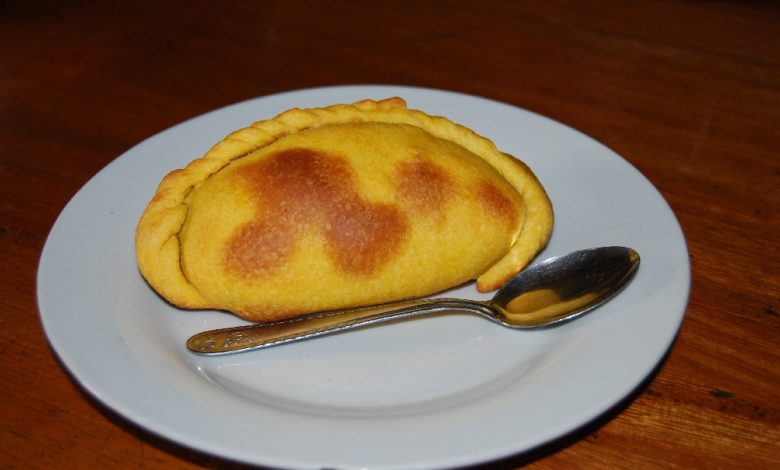
A wonder, crusty and slightly sweet pastry outside and spillingly juicy and piquant inside, salteñas [salt-táyn-yuhs] are claiming ever more bellies in Cuzco. This marvelous empanada, despite its name, is from La Paz, Bolivia and, while it is worth every bite, it also is a cutting edge of a whole invasion of culture from nearby Bolivia into Cuzco.
Bolivian-style music fills the performances in most of Cuzco’s restaurants where tourists consume Andean music and culture. Of course, part of the reason for that is that for more than a generation Ecuadorian musicians have taken Bolivian music and played it in parks and auditoriums throughout North America and Europe. The style of groups like Kjarkas is the one that people know, rather than the more peculiar style that is particular to Cuzco.
Similarly, dance troupes during feasts in Cuzco often perform the jatun qolla dance, or the big Colla–i.e. person from the altiplano and especially Bolivia, as a means of representing the people who live next door to them so to speak. In the dances they also portray the power and fertility the Collas are thought to have represented in the llamas they carry on their backs.
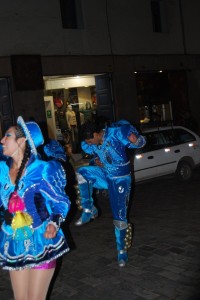
Other troupes, perform the saya, a dance from the Afro-Bolivian eastern slopes of the Andes in La Paz. Especially popular, is the aggressive and elegant caporal, which builds on the saya to make a portrayal of the bosses of African slaves. Though widely performed in La Paz during feast day parades, it is stunning to see the caporal, with its bells and jumps, in the streets of Cuzco.
Finally, people from the altiplano who follow the trade networks from La Paz to Cuzco, with a third point in northern Chile, bring another Bolivian portrayal of African slaves, the morenada (although this dance may actually portray the achachilas, the mountain deities,) which sways colorfully and rhythmically through the streets of Cuzco during many feasts.

In any case, these three dances in themselves take images of other people — whether portrayals of Collas or of historical memories of Black slaves and the bosses that brutalized them — for the empowerment of local peoples, and they take the culture of neighbors (Bolivians and other Collas) for enhancing local value.
This local value derives from the power and prestige Bolivia has had since time immemorial. Back before the Incas expanded beyond the Cuzco Valley the Collas were a very powerful society that had been the seat of an ancient civilization, Tiwanaku. An important moment of Inca expansion was when it conquered one and absorbed the other Colla kingdoms, giving it enormous reach and economic power. After the Inca, the Colla regions were powerhouses of mining and agriculture, extending to the present day.
La Paz, the de facto capital of Bolivia is the largest city in the region and an economic power, balanced only by the other regional power the second city of Peru, Arequipa, in a valley near the southern coast. It is a hotbed of economic and cultural production — ideas music, dance, and costumes — that increasingly influence Cuzco.
As a sign of its influence, salteña cafes (salteñerías) fill with Cuzquenians every morning to enjoy a Bolivian stuffed pastry and a cup of coffee or some other tea. Of course, just like Americans with Mexican food, they do not appropriate the Bolivian empanada exactly as it is in Bolivia. The people of Cuzco serve it with slices of lime so they can squeeze tartness on the pastry and build a new contrast with its indigenous sweet and piquant flavor.
The salteña stems from a whole family of empanadas, folded filled pastries that came from the Middle east into Spain with its Muslim conquerors well over a thousand years ago. From there, it travelled with more conquerors into the New World where every town and region, not to mention every family now has its own form of empanada.
While the basic idea is the same — taking a pastry round and folding it over spoonfulls of filling, either savory or sweet, both the pastry and the filling can vary, as can the technique of closing this envelope.
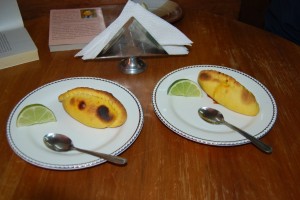
The salteña has its final fold, a delicate and carefully woven spiral, on top instead of on its sides as most empanadas do. It takes years of practice to do this apparent braiding well.
The dough itself is mildly sweet, unlike most empanadas which use a dough unseasoned by anything other than salt. The salteña’s dough is often colored lightly-orangish-yellow by a small bit of achiote. While this is a common source of coloring for food in the US (including the yellow of cheddar cheese) when called annatto, it is also a seasoning indigenous to the South American lowands.
And now, the real difference. Most empanadas have a compact filling that, while moist, does not leak juice. The salteña, on the other hand, is filled with a meat, potatoes and carrot soup (and often includes olives). It’s broth is meaty and tangy, with a bite from the ají (hot pepper) that goes into it, as well as slightly sweet.
Eating it is an art. The pies that fit so easily into the hand — and they are generally a handfull — will slosh and spill the minute the crust is broken. One can either hold them upright in one hand and use a spoon in the other to ladle the contents to the mouth, or one can lift, bite, drink, and chew like native masters often do.
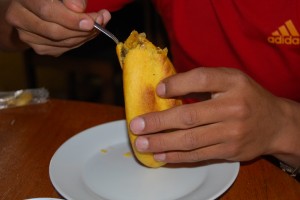
The secret of the salteña comes from this rich spicy, sweetish yet savory broth. In the days before refrigerators they could only be made in areas where over night the temperatures plunge, like in the Bolivian highland, since the broth depends on a natural gelatin that thickens the broth into almost solid state when cold, and yet when hot is liquid. When cold it can be worked, just like most empanada fillings, but when hot, fresh out of the oven, it is runny, tasty, and wet. It is a great contrast, like the altiplano itself, between the wet — like the lands around the massive Lake Titicaca in the altiplano’s center, and the dry highlands with mountain peaks around it.
The name for the empanada is a curiosity. They are called salteñas as if they were something female from the northern Argentine city of Salta, which just happens to be on the flatlands where the mountains end. How they got that name is a matter of much debate and lots of fantasy about charming women from Salta peddling empanadas in the streets.
But the salteña in Bolivia has a history that goes deep into the colonial past, according to historical cookbooks and the work of anthropologist and food historian Beatriz Rossells Montalvo. But the name is also not just a weird fact, it fits in a pattern of taking something from your neighbors to make your own so your society can be fruitful, or in this case enjoy a mid-morning snack.
While it is not known exactly how the salteña came to Cuzco, one of the more widespread salteña café chains was started by a Bolivian immigrant to Arequipa and from there made its way to Cuzco, as well as to the Chilean border city of Tacna. Called la Salteñita Boliviana, it is one of three salteña cafés where Q’era and San Bernardo Streets meet in the heart of Cuzco. Besides the Salteñita Bolivia, which is on San Bernardo, there is the Virgen de Bolivia and the Copacabana Salteñería, both named after the patroness of Bolivia, the Virgin of Copacabana.
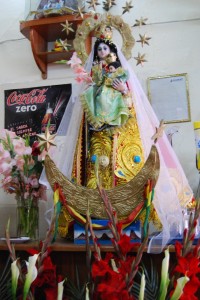
So, mid-morning during your visits to Cusco, if you feel the need for a break and a burst of energy from a great snack, try your hand at eating a salteña. It´s beauty and its mix of savory, piquant and sweet, will have you coming back for more.




